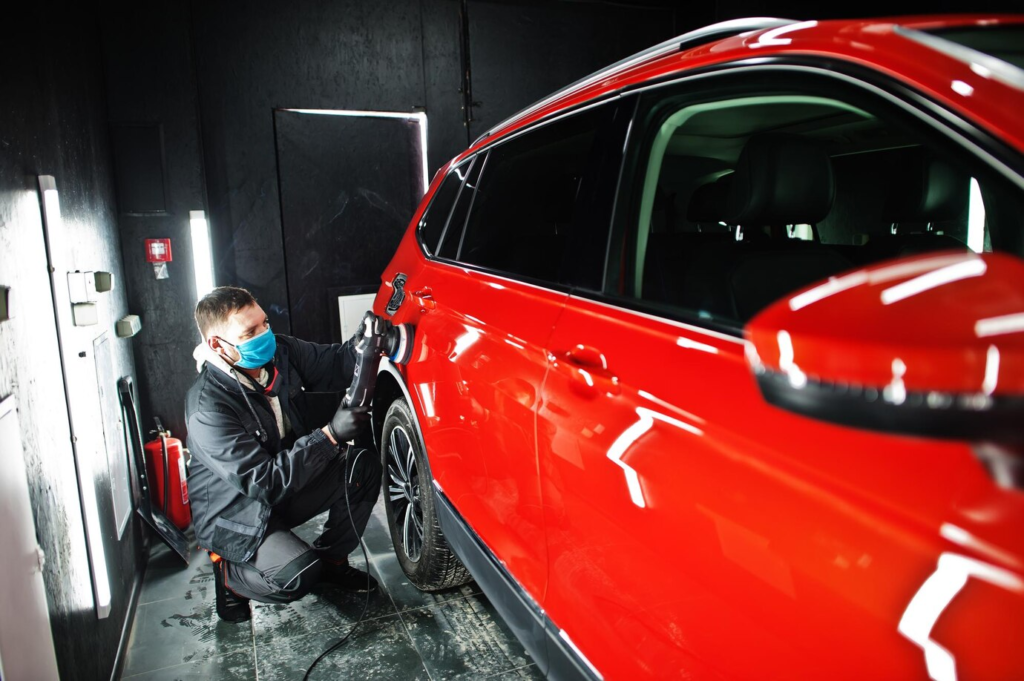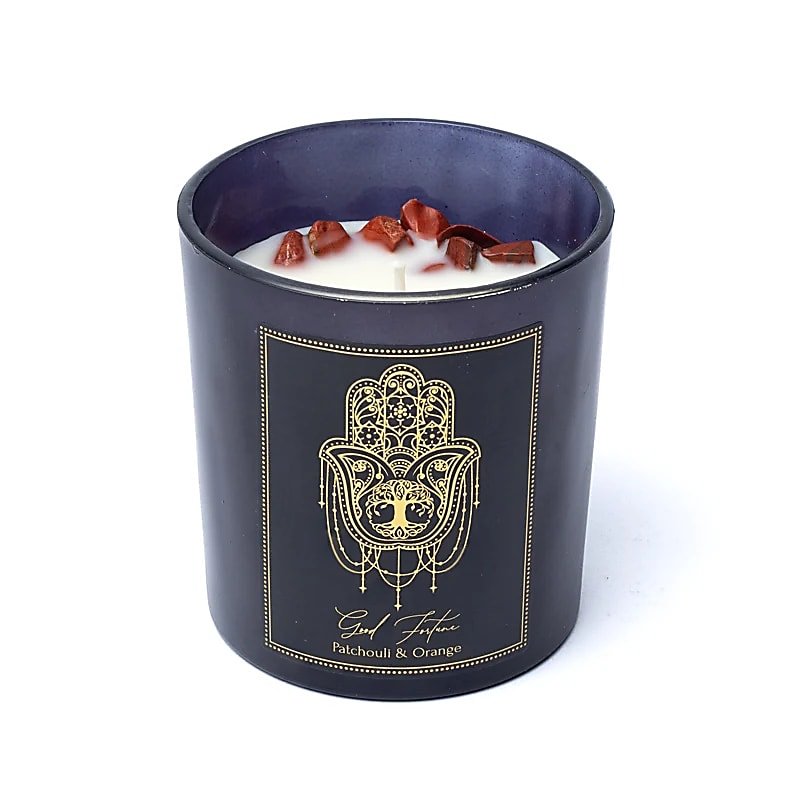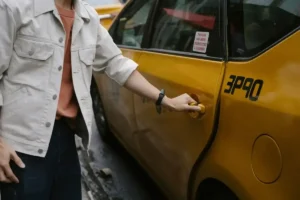The Science Behind Ceramic Coatings for Cars: Are They Worth It?
Introduction to Ceramic Coatings
What Exactly Is a Ceramic Coating?
When it comes to protecting your car, a ceramic coating is often hailed as a revolutionary product. But what is it, really? A ceramic coating is a liquid polymer that chemically bonds with your vehicle’s factory paint, creating a layer of protection. Unlike traditional waxes or sealants that sit on the surface, ceramic coatings integrate themselves into the paintwork, offering better durability and resilience.
The main ingredient, silicon dioxide, or Silica (SiO2), usually derived from natural sources like quartz or sand, forms a chemical bond with the surface. Once cured, it creates a hydrophobic surface that repels water, dirt, and other contaminants. This results in a glossy, slick, and easy-to-clean surface that promises to keep your vehicle looking brand new.
The coating doesn’t just enhance appearance—it’s designed to protect against environmental damage like UV rays, acid rain, bird droppings, and road salts. However, despite all the marketing hype, it’s important to understand the real capabilities and limitations of ceramic coatings before making a financial commitment.
How Ceramic Coatings Work on Car Surfaces
Hydrophobic Properties
One of the most lauded benefits of ceramic coatings is their hydrophobic nature. Hydrophobic literally means “afraid of water,” and in the case of your car, it means water will bead up and roll off the surface rather than sticking around to cause water spots or corrosion.
When rain falls on a ceramic-coated car, you’ll notice tight water beads that easily slide off. This phenomenon makes it much harder for dirt, mud, and road grime to stick to the surface. Regular washing becomes less labour-intensive because contaminants struggle to bond to the slippery surface.
Hydrophobicity also means quicker drying times and less risk of waterborne contaminants etching into your clear coat. For car enthusiasts and everyday drivers alike, this property alone often makes ceramic coatings a compelling investment.

Protection Against UV, Chemicals, and Scratches
Beyond just keeping your car clean, ceramic coatings can help provide robust protection against a variety of environmental hazards. UV rays, for instance, are notorious for causing oxidation and fading of paint over time. A ceramic coating acts like a sunscreen for your vehicle, blocking out the majority of harmful rays.
Chemical resistance is another major advantage. Bird droppings, bug splatter, acid rain, and even road salts can severely damage untreated paint. Ceramic coatings create a chemical-resistant layer that minimises the risk of these substances causing permanent harm.
However, while ceramic coatings offer some scratch resistance, it’s important to understand that they aren’t bulletproof. Light scratches and swirls may be minimised, but they won’t save your car from deeper gouges or rock chips. That’s where products like Paint Protection Film (PPF) come into play.
Benefits of Ceramic Coatings for Vehicles
Long-Lasting Shine and Gloss
If you’ve ever admired a car that looks like it just rolled off the showroom floor, chances are it had a ceramic coating. One of the standout benefits of ceramic coatings is the deep, candy-like gloss they provide. Unlike traditional waxes that tend to dull after a few weeks, ceramic coatings maintain their lustre for years.
The chemical composition of ceramic coatings enhances the reflective properties of your car’s paint. Light hits the ultra-smooth surface and bounces back evenly, creating that signature, high-gloss appearance. This is especially noticeable on darker-coloured cars, where every ray of light accentuates the rich, deep colour of the paintwork.
Another advantage is that this glossy effect doesn’t require constant reapplication. With a ceramic coating, you can enjoy that head-turning shine without the repetitive cycle of waxing every month. Over time, this translates into considerable savings, both in terms of money and maintenance effort.
Moreover, the enhanced appearance isn’t just for show. A cleaner, shinier car retains its resale value much better. Potential buyers will always be more impressed with a vehicle that looks well cared for, and ceramic coatings help ensure your car remains in top aesthetic condition.
Reduced Maintenance Needs
One of the biggest selling points of ceramic coatings is how much easier they make it to maintain your vehicle. Because of their hydrophobic and anti-static properties, ceramic-coated cars stay cleaner for longer periods. Water, dirt, mud, and other contaminants have a much harder time sticking to the surface.
Routine washes become much faster and less frequent. Often, a simple two bucket wash with quality shampoo and water can remove most surface grime. And when it does come time for a full wash routine (prewash, wash, decontamination etc), you won’t need as many harsh chemicals or intensive scrubbing, which reduces the risk of introducing new swirl marks or scratches.
Furthermore, ceramic coatings can offer protection against chemical stains from acidic contaminants. When bird droppings or tree sap land on a coated car, they’re less likely to cause damage because they can’t bond easily to the surface. Still, it’s always best to clean off any contaminants promptly to ensure the longevity of the coating.
In essence, ceramic coatings transform the way you approach car care. Instead of laborious detailing sessions every other week, you can spend that time simply enjoying your pristine ride.
Common Myths About Ceramic Coatings
Are They Really Scratch-Proof?
One of the most pervasive myths surrounding ceramic coatings is the idea that they make your car completely scratch-proof. Unfortunately, this is not entirely true. While ceramic coatings do offer a level of scratch resistance, they are not indestructible.
The coating can certainly help prevent minor scratches and swirl marks caused by everyday elements like dust or improper washing. However, it won’t protect your car from deeper scratches caused by keys, rocks, or accidents. Think of ceramic coating as an additional, but not impenetrable, armour.
Some marketing materials might show keys being dragged across ceramic-coated surfaces with no visible damage. While this may be true under very controlled conditions, in the real world, a hard enough impact will still penetrate the coating and damage the paint beneath.
It’s better to view ceramic coatings as part of a broader protection strategy. For comprehensive protection, many car owners pair ceramic coatings with Paint Protection Film (PPF), which can physically absorb impacts.
Do They Make Cars “Maintenance-Free”?
Another popular myth is that a ceramic-coated car becomes virtually maintenance-free. While it’s true that maintaining a coated vehicle is easier, it doesn’t eliminate maintenance altogether.
Regular washing is still essential. Although dirt and grime don’t stick as easily, they can still accumulate over time. Skipping washes can cause contaminants to build up, potentially diminishing the hydrophobic properties of the coating.
Additionally, to maintain maximum performance, some ceramic coatings require periodic “top-up” treatments or ceramic boosters. These are spray-on products designed to rejuvenate the coating’s properties between full reapplications.

Ignoring maintenance can shorten the lifespan of the coating and diminish its visual appeal. So while you’ll spend less time and effort maintaining a ceramic-coated car compared to an unprotected one, maintenance remains a crucial part of preserving that showroom shine.
Application Process: What to Expect
Professional Application vs. DIY Kits
When it comes to ceramic coatings, you have two primary routes: professional application or do-it-yourself (DIY) kits. Both have their pros and cons, and the right choice largely depends on your experience, budget, and expectations.
Professional Application:
- Expertise: Professional detailers have specialised training and experience. They know how to properly prep the surface, ensuring maximum bonding and durability.
- Environment: They apply coatings in controlled environments that are dust-free, ensuring no contaminants interfere with the curing process.
- Warranty: Many professional services offer warranties lasting from 2 to 7 years, giving you peace of mind.
However, professional applications come at a cost, typically ranging from $500 to over $2,000, depending on the product and detailer.
DIY Kits:
- Affordability: DIY kits cost a fraction of professional services, often between $50 and $150.
- Convenience: You can apply them at your own pace and schedule.
On the downside, DIY coatings usually have a lower Silica content and shorter lifespan. Plus, mistakes during the prep or application process can compromise the effectiveness of the coating.
If you’re considering a DIY kit, make sure you invest the time to learn proper prep techniques, such as washing, decontaminating, and paint correction (polishing out existing scratches) before applying the coating.
For DIY enthusiasts who want outstanding results without the complexity of a professional installation, we highly recommend the Gyeon Q2 CanCoat 200ml. It’s one of the easiest ceramic coatings to apply, designed for car owners who want instant protection and incredible gloss without the need for special tools or detailing experience. Simply spray and wipe to achieve a durable, hydrophobic layer that rivals professional-grade coatings. It’s an excellent entry point into the world of ceramic protection, combining convenience with high performance.
Cost Factors Involved
The cost of ceramic coating varies widely based on several factors:
- Type of Coating: Professional-grade coatings with high SiO2 content cost more.
- Vehicle Size: Coating a compact car costs less than an SUV or truck.
- Paint Condition: Vehicles requiring extensive paint correction will increase the overall cost.
- Detailer’s Reputation: High-end detailers charge a premium for their expertise and brand reputation.
While the initial cost may seem high, the long-term savings on waxing, detailing, and paint repairs often make ceramic coatings a smart investment.
Longevity and Durability of Ceramic Coatings
Factors That Affect How Long It Lasts
When people invest in ceramic coatings, one of their first questions is, “How long will it last?” The answer depends on several critical factors. First and foremost, the quality of the product plays a huge role. High-end coatings with high percentages of SiO₂ (silicon dioxide) or additional TiO₂ (titanium dioxide) will typically last much longer than low-end alternatives.
The application method also impacts durability. A professionally applied coating in a controlled environment will almost always outlast a DIY application done in a dusty garage. Surface preparation—like decontamination and paint correction—makes a massive difference because the coating needs a pristine surface to bond correctly.
Environmental exposure matters too. Cars that are regularly parked outdoors, exposed to sunlight, bird droppings, acid rain, or industrial fallout, will experience faster degradation than garage-kept vehicles. Regular exposure to extreme weather conditions or pollution can strain even the best coatings.
Lastly, maintenance practices affect longevity. Neglecting routine washes, using harsh chemicals, or failing to apply maintenance products like ceramic boosters can cause the protective layer to deteriorate faster. In the best-case scenario, with proper care, professional ceramic coatings can protect your car for 5 to 7 years. DIY versions generally offer around 1 to 2 years of protection.
Maintenance Tips to Extend the Life
Maintaining a ceramic coating doesn’t have to be complicated, but it does require consistency. Here are some tips to maximise the lifespan of your investment:
- Regular Washing: Wash your vehicle every two weeks using a pH-neutral car shampoo. Avoid using dish soaps or other degreasers, as these can strip away protective properties.
- Two-Bucket Method: Always use the two-bucket washing technique (one for soapy water, one for rinsing) to minimise swirl marks.
- Dry Properly: Always dry the car with a clean, soft microfiber drying towel to avoid water spots.
- Use a Ceramic Booster: Every few months, apply a ceramic coating booster spray. This rejuvenates the hydrophobic properties and enhances durability. To maximise the life of your coating, it’s crucial to use a high-quality maintenance product. We recommend topping up your protection with the Duragloss Enviroshield Ceramic Coating System. Not only does it act as a robust primary coating, but its kit also provides components for periodic refreshment, helping maintain that fresh, glossy finish year after year.
- Avoid Automatic Car Washes: Automated brushes are notorious for scratching surfaces and prematurely wearing down coatings.
- Promptly Remove Contaminants: Bird droppings, sap, and bug splatter should be cleaned immediately to prevent etching into the surface.
By incorporating these habits, you’ll ensure your car maintains its brilliant shine and robust protection for as long as possible.
Comparing Ceramic Coatings to Other Car Protection Options
Wax vs. Sealants vs. Ceramic Coating
When it comes to protecting your vehicle’s paint, you have three primary options: waxes, synthetic sealants, and ceramic coatings. Let’s break them down:
| Feature | Wax | Sealant | Ceramic Coating |
| Durability | 1-3 months | 6-12 months | 2-7 years |
| Gloss/Finish | Warm, rich glow | High gloss | Deep, candy-like shine |
| Protection Against UV | Minimal | Moderate | Excellent |
| Chemical Resistance | Low | Moderate | High |
| Hydrophobicity | Low | Moderate | Excellent |
| Cost | Low ($30-$100 | Moderate ($50-$100) | High ($500-$2000) |
Waxes provide a beautiful, warm glow and are easy to apply but require frequent reapplication. They also offer minimal protection against environmental hazards.
Sealants are synthetic products designed to last longer than wax. They provide better protection against UV rays and chemical contaminants, but still require semi-regular reapplication.
Ceramic coatings, on the other hand, dominate in every performance category except cost. They offer long-lasting protection, incredible gloss, and excellent resistance to environmental damage. If you’re serious about maintaining your car’s appearance and value, ceramic coatings are in a league of their own. If you’re ready to experience the ultimate in vehicle protection and shine, look no further than Gyeon Q2 Mohs 30ml. Known for its exceptional hardness and longevity, Gyeon Q2 Mohs provides an unmatched candy-like gloss and outstanding protection. It’s an investment in keeping your car looking flawless while outperforming traditional waxes and sealants in every way.
Potential Downsides of Ceramic Coatings
High Upfront Costs
There’s no way around it—ceramic coatings can be expensive. Professional applications can cost anywhere from $500 to $2,000 or more, depending on the size of your vehicle, the condition of your paint, and the quality of the product used.
For many car owners, especially those with older or less valuable vehicles, the cost may not seem justifiable. When you consider the fact that ceramic coatings are mainly about appearance and maintenance ease, rather than bulletproof protection, the high upfront investment might be hard to swallow.
However, it’s important to weigh this against the long-term benefits. A well-maintained ceramic coating can eliminate the need for frequent waxing, save countless hours on detailing, and potentially increase your vehicle’s resale value.
In that sense, it’s not just a purchase—it’s an investment in your vehicle’s future.

Misleading Marketing Claims
As ceramic coatings have exploded in popularity, so too have the number of exaggerated marketing claims. Some advertisements make it seem like ceramic coatings will make your car completely immune to scratches, dents, and chemical damage.
Spoiler alert: No coating can make your car invincible.
At best, a ceramic coating offers enhanced scratch resistance, not scratch proofing. At best, it provides chemical resistance, not total chemical immunity. And at best, it makes cleaning easier, but it doesn’t eliminate the need for regular washing and occasional maintenance.
Understanding the real-world capabilities—and limitations—of ceramic coatings is crucial before making a purchase. Always ask detailed questions if you’re considering professional services, and read reviews carefully to avoid falling for overhyped products.
Are Ceramic Coatings Worth It? A Balanced Perspective
Factors to Consider Before Deciding
Deciding whether ceramic coatings are worth it really comes down to your individual needs, expectations, and lifestyle. While the glossy advertisements make them sound like a miracle product, the reality is a little more nuanced.
Here are a few questions you should ask yourself:
- How long do you plan to keep your vehicle? If you lease your car or plan to sell it within a year or two, the investment in a ceramic coating might not make financial sense.
- Where do you park your car? If your car spends most of its time parked in a garage, you may not need extreme protection against environmental elements.
- How much do you value appearance? If you take pride in having a car that looks showroom-fresh, then a ceramic coating can be a worthwhile investment.
- Are you prepared for regular maintenance? Ceramic coatings simplify maintenance but don’t eliminate it. If you expect a totally maintenance-free experience, you might be disappointed.
Also, it’s important to factor in your budget. If a professional application isn’t within reach, there are still good-quality DIY options that, while not as durable, offer significant benefits for a fraction of the price.
Ultimately, ceramic coatings are an excellent choice for those who view their car as an investment and want to maintain its aesthetic appeal over the long term.
Best Scenarios for Ceramic Coating Investment
Ceramic coatings make the most sense in certain scenarios:
- Luxury vehicles or high-end sports cars, where preserving the exterior is crucial.
- Daily drivers are exposed to harsh weather, road salts, or bird droppings.
- Show cars where appearance is everything and maximum gloss is desired.
- Busy owners who want to minimise time spent washing and detailing.
In these cases, the combination of protection, appearance, and ease of maintenance often justifies the cost of a quality ceramic coating.
However, for older vehicles, or cars primarily used for rough work (like construction trucks), spending thousands on a coating may not deliver a strong return on investment.
Conclusion
Ceramic coatings represent a major leap forward in automotive paint protection technology. They provide an incredibly durable layer that enhances gloss, repels contaminants, and simplifies maintenance, all while protecting your car’s paint from UV rays, chemicals, and minor scratches.
Yet, like any product, they are not magic. They don’t make your car bulletproof, and they certainly don’t eliminate the need for washing or occasional care. Understanding the strengths and limits of ceramic coatings is crucial before investing your hard-earned money.
If you want a car that turns heads for years to come and you’re willing to invest in proper maintenance, a ceramic coating can be worth it. It’s about balancing the upfront cost with the long-term benefits of time saved, appearance maintained, and value preserved.
Choosing a reputable installer, committing to a maintenance routine, and having realistic expectations are the keys to making sure you get the most out of your ceramic coating investment.
FAQs
How long does a ceramic coating last?
A professional-grade ceramic coating can last anywhere from 2 to 7 years, depending heavily on the product quality, environmental factors, and maintenance habits. DIY coatings tend to offer protection for 1 to 2 years.
Can you apply ceramic coating yourself?
Yes, DIY ceramic coating kits are widely available and cost-effective. However, they require careful surface preparation and application to be effective, and typically won’t last as long as professionally applied coatings.
Does ceramic coating replace waxing?
Absolutely. Once your car is ceramic-coated, there’s no need to wax it. Ceramic coatings offer superior protection and a much longer lifespan compared to traditional waxes.
Will ceramic coating protect against rock chips?
Not really. While ceramic coatings offer some resistance to small scratches and chemical damage, they don’t provide sufficient thickness to absorb rock chip impacts. For that kind of protection, Paint Protection Film (PPF) is a better choice.
How can I maintain my car after ceramic coating?
Maintaining a ceramic-coated car involves regular washing with pH-neutral shampoos, drying with clean microfiber towels, using ceramic boosters every few months, and avoiding abrasive cleaning tools. Skipping automatic car washes is highly recommended to preserve the coating’s integrity.










